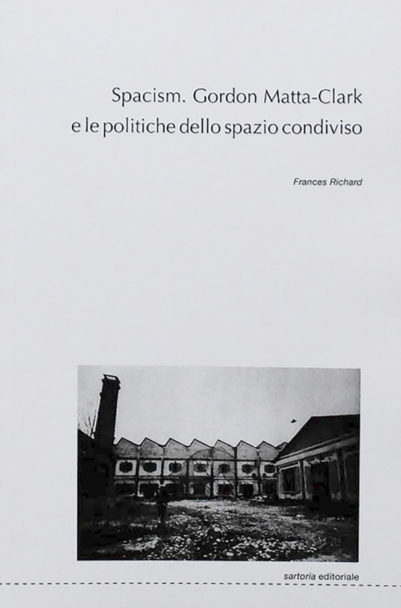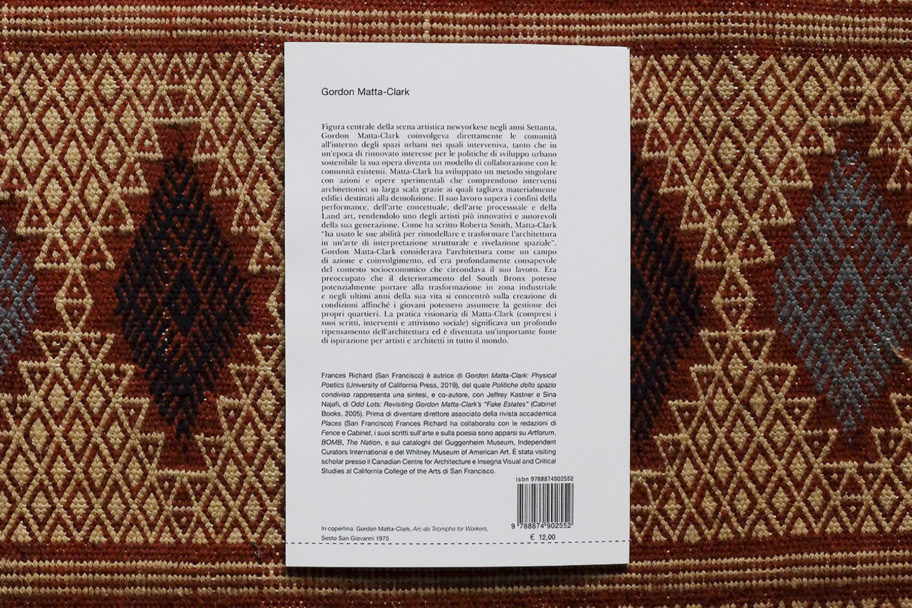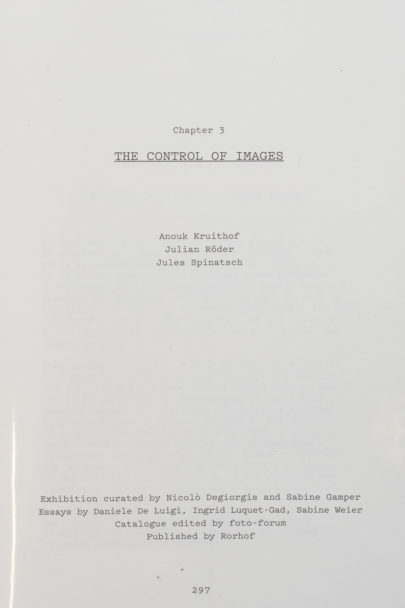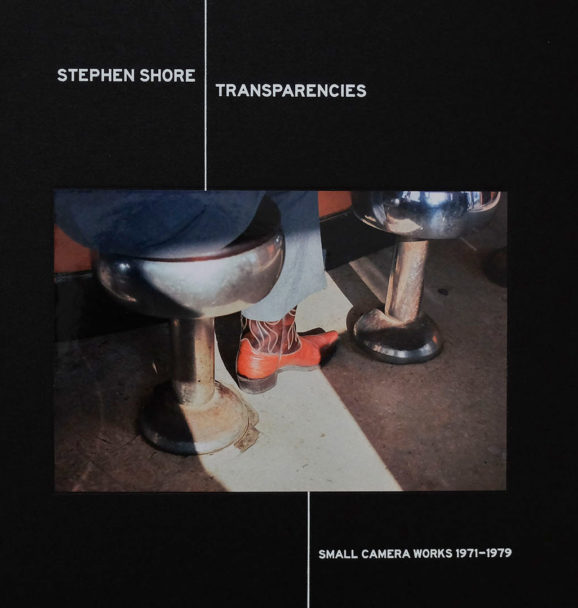
Frances Richard, SPACISM. GORDON MATTA-CLARK E LE POLITICHE DELLO SPAZIO CONDIVISO, 2020
12 Euro

Out of stock
Central figure of the New York art scene in the seventies, Gordon Matta-Clark directly involved the communities within the urban spaces in which he intervened, to the point that in an era of renewed interest in sustainable urban development policies, the his work becomes a model collaboration with existing communities. Matta-Clark developed a singular method with experimental actions and works that include large-scale architectural intervents which he physically cut the buildings destined for demolition. His work goes beyond the boundaries of performance, conceptual art, procedural art and Land art, making him one of the most innovative and authoritative artists of his generation. As Roberta Smith wrote, Matta-Clark “used his skills to remodel and transform architecture into an art of structural interpretation and spatial revelation”. Gordon Matta-Clark considered architecture as a field of action and involvement and was deeply aware of the socio-economic context surrounding his work. He was worried that the deterioration of the South Bronx could potentially lead to transformation into an industrial area and in the last years of his life he focused on creating conditions for young people in the city center to take ownership of their neighborhoods. Matta-Clark’s visionary practice (including his writings, interventions and social activism) has meant a profound rethinking of architecture and has become an important source of inspiration for artists, architects and activists around the world.
Frances Richard, Spacism. Gordon Matta-Clark e le politiche dello spazio condiviso
Postmedia Books
2020
74 pagine, 21 x 14 cm
Italiano




